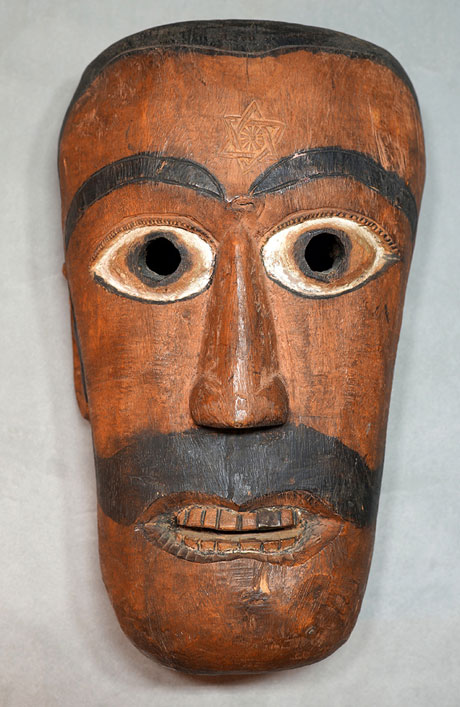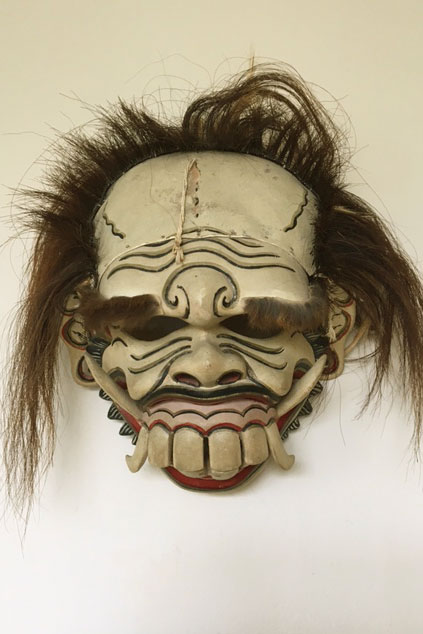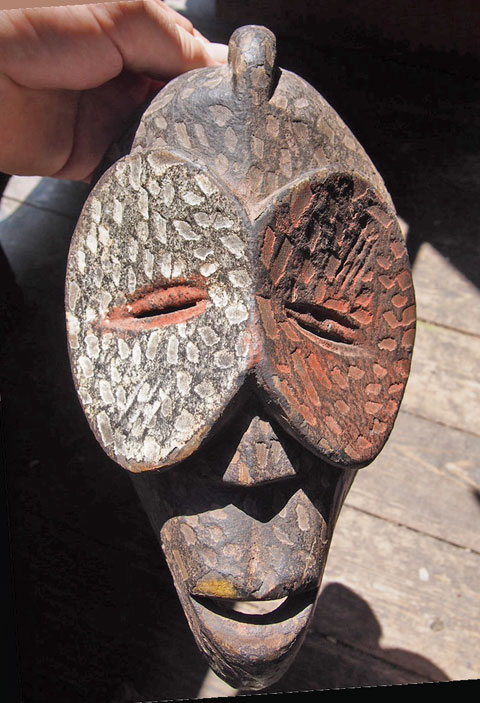
Q: The heavy hardwood mask with a star on the forehead is, I was told, an older carnival mask from Trinidad & Tobago. It supposedly represents a policeman (hence the star). I’m not sure all this is accurate, but it does make some sense. I’ve never seen a mask quite like this one before. What do you think? Aaron, 838
A: You have a good eye for quality. I think this is an authentic mask, but like you, I’m not aware of carnival masks from Trinidad & Tobago looking anything like this. Your next consideration should be Ecuador. The hardwood looks right and so do the round holes to see through. In the old days, the Quechua-speaking Indians in the mountains didn’t have much access to the colorful enamel now used on all of their masks. Having said this, let’s not rule out that someone will suggest a remote area of Asia. Identifying masks can be difficult!




5 Comments
Chris
The big white navette-shape eyes with the round holes and the black iris ring certainly points towards a Cotopaxi area Ecuadorian mask. Also the simplicity of the face, and the simply carved teeth do, as does the described heaviness of the wood and the carving as such. If at the back there are still three holes for three strings (one on each side, one at the top), that would additionally point to Ecuador, as most old Cotopaxi masks were held in place in a simple way by a triangle-kind string system. The physiognomy of the character could well be a señor from the Andes Highplanes, some important male character, maybe from government, or a hacienda. However, I have never seen such a star – it seems totally out of place. Nevertheless, I would like to remember that another character, the clown/el payaso, shows also almost always a sign, a red or black cross, on his forehead. So, a sign like that star could not be out of place totally, but I have never seen it on the many masks from Ecuador I encountered. Additionally, I would rule out the Carribean – this seems very unlikely and not at all Carribean style. Greets, Chris
Bob Ibold
Aaron sent this to me. “There’s a mild African influence here, too. I guess we’ll have to hope someone else chimes in. I actually know an anthropologist from Trinidad who specializes in carnivals. Maybe I’ll ask her.”
I answered: “Keep in touch. We’ve got to solve this one. That mask looks awfully good!”
Aaron
The more I compare this to my wood masks from Ecuador, the more I’m starting to think like Chris. The eyes really are similar to some payaso masks, an the eyelashes as well. That said, it is not a stock character like the payaso, huasco, diablo, perro, mama negra, or tigre. Possibly it does represent a policeman. Not all characters all stock.
Dan Kleingers
Stylistically more like masks from Tibet/Nepal or Himalayas regions. Some of those masks have very similar eye treatment and various forehead markings
michael
I am nearly 100% shure it is a tourist mask from Kathmandu, Nepal. Please try to check the backside, if you could find a stamp in red wax. All masks, that are not really old, have to get this wax sign for export.